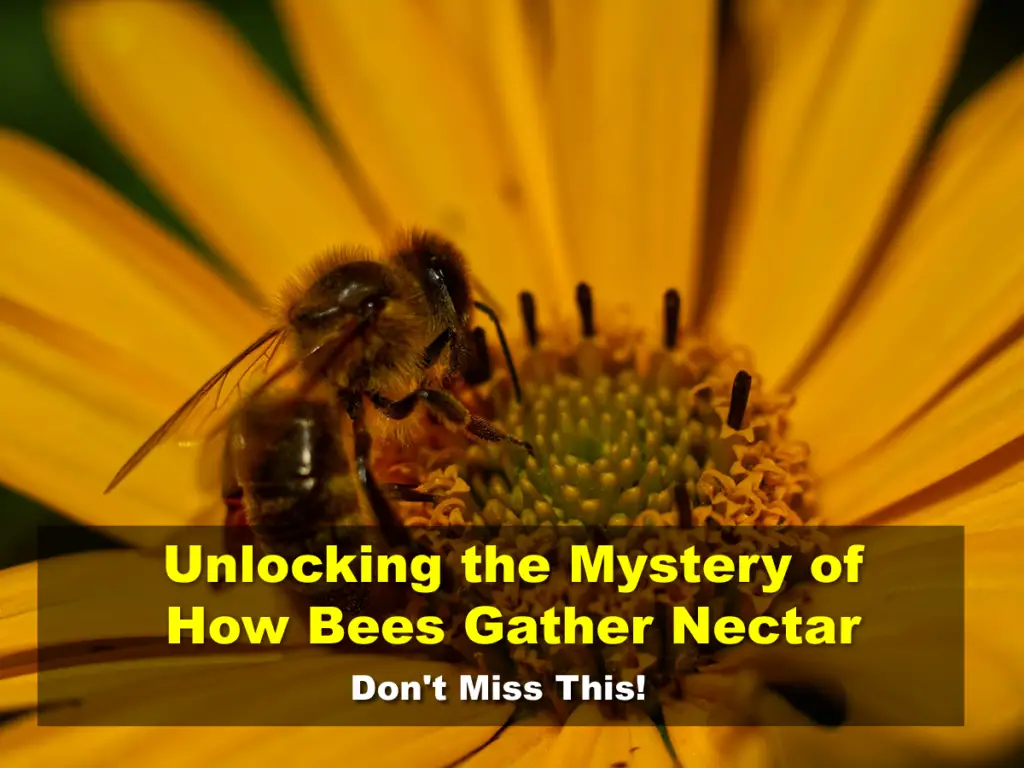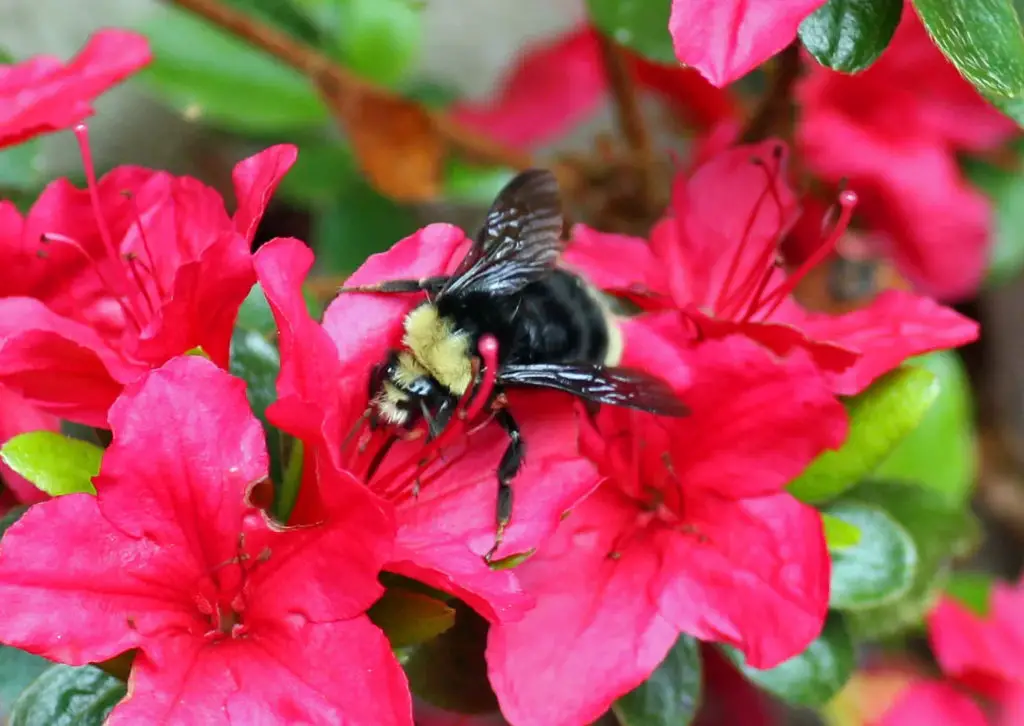Affiliate Disclaimer - As an Amazon Associate I earn from qualifying purchases.
It supports the website. So, Thank you
We all know that bees collect nectar and pollen and most of us will have sat in the garden during summer, watching these fascinating creatures moving from flower to flower doing just that. When you think that they collect nectar and take it back to the hive to make honey and when you think about how much honey a single colony can produce, it makes you wonder how they carry so much. So how do bees collect nectar?
Bees have a little pouch known as a crop which holds any nectar they collect until they get back to the hive. They use their straw-like tongues, called their proboscis, to suck nectar from the flowers.
Of course, there’s a lot more to this process and I’d love to tell you more. So, let’s explore the journey from flower to honey jar and what bees use nectar for.
Table of Contents
What Is Nectar?
Nectar is a natural substance that is produced by plants. A lot of people think that it is made in the flower but nectar actually first develops within the plant’s leaves.
Plants ‘breathe’ in carbon dioxide using their leaves. It’s this part of the plant that also takes in moisture and as it does this, the plant begins to produce sugar. It uses the sun’s energy in a process known as photosynthesis and the result is food for the plant; they’re very self-sufficient.
The sugary substance produced is called nectar and this moves through the plant to all the different areas including the stem, roots, and of course, the flower. However, there’s usually some excess nectar and this comes out of the base of the flowers where bees will collect it. But nectar isn’t only collected by bees, other animals including hummingbirds and butterflies will lap it up.

How Do Bees Collect Nectar?
In order to collect nectar, bees have specially adapted bodies that make it much easier than we might imagine. For starters, bees have a very unique tongue known as a proboscis. Unlike our flat tongues, the proboscis is covered in tiny hairs which the bees can fashion into something of a straw. As you can imagine, this makes sucking up nectar a breeze!
The bee also has a sac which is known as a crop, or sometimes more cutely, a honey stomach! It’s here that the bees store all of the nectar and they can carry so much that sometimes, they’ll hold almost the equivalent of their own body weight!
Only the worker bees go out to gather nectar and pollen and these are always females. Moving between flowers and working so hard requires a lot of energy so the bee has a small valve in her honey stomach which she can open in order to eat some of the nectar. Since this is a substance so high in sugar, it provides all the energy the bee needs to continue her work.
What Do Bees Do With Nectar?
As I have just mentioned, bees will eat nectar as an important energy source. Not only does it contain sugars but it’s also very high in carbohydrates so when they eat it, the bee is immediately energized.
When worker bees get back to the hive, it’s time to pass the nectar they’ve collected onto other bees. Their job is to digest the nectar, turning it into a form of diluted honey. This is achieved because of special enzymes within the bee’s stomach which also help to take out a lot of excess moisture.
This preliminary honey is then fanned by the bees who vigorously flap their wings, further removing water before storing the honey in comb cells and capping them with wax. This is then left in place until winter when food sources outside of the hive are low. This is why, if you are keeping bees, you must make sure to leave an adequate amount of honey in the hive when harvesting. Without it, the colony will struggle to survive over winter.
Bumble Bees And Nectar
The process I have talked about so far is in relation to honey bees but of course, with hundreds of bee species, it’ll come as no surprise that other bees use nectar in different ways. Let’s take the bumble bee for example.
Unlike honey bee queens that remain inside the hive apart from when taking a mating flight, queen bumble bees are much more active. They will go out and forage for nectar during the very earliest part of spring. Since it’s still very cold at this time of the year, the bumble bee needs to make sure she keeps her energy levels up so finding nectar is essential.
These bees can often be seen looking for nectar on shrubs that flower in the winter and keep in mind that she does all this whilst pregnant! You see, the queen bumble bee will have mated the year before and then gone into hibernation over winter. Once spring comes around, she will begin looking for an appropriate site to lay her eggs.
She’ll gather all of the provisions she needs including pollen which is essential for the health and development of her larvae. The queen bumble bee will then incubate her eggs but it’s still really important for her to maintain her energy so she has a small ration of nectar in the form of a pot that she feeds from during this time.
Once her eggs hatch, the larvae will feed on any nectar that the queen has collected. Before long, they’ll grow big and strong enough to help in maintaining the nest and the females will head out to start their own journeys. Before they mate, female bumble bees will head out to gather nectar which is used as food for the other adults in the nest. Although, keep in mind that bumble bee nests are much smaller than that of the honey bee. Where there may be tens of thousands of honey bees in a single colony, bumble bee nests usually only contain a few hundred individuals.
Final Thoughts
Have you ever asked yourself ‘how do bees collect nectar?’ It’s hard to believe that such small creatures are able to consistently carry large amounts of this sweet substance, especially when you learn that they can go miles from their hives.
Nectar is collected in the bee’s crop after being sucked up using a straw-like tongue called the proboscis. It’s then taken back to the hive where it’s made into honey which the bees store for food over the winter.




